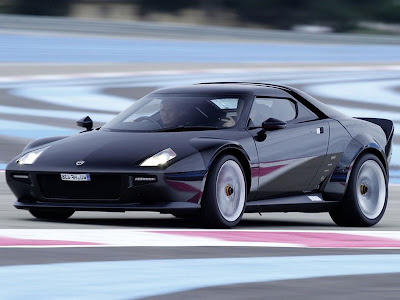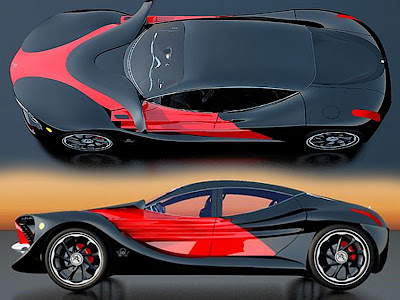Stratos Lancia Concept Cars 2010
The legendary
Lancia Stratos HF was without a doubt the most spectacular and successful
rally car of the 70s. With its thrilling lines and uncompromising
design tailored to rally use, the
Lancia Stratos not only single-handedly rewrote the history of rallying, it won a permanent place in the hearts of its countless fans with its dramatic performance on the world’s asphalt and gravel tracks – a performance which included three successive world championship titles.
For Michael Stoschek, a collector and driver of historic
racing cars, as well as a successful entrepreneur in the automotive supply industry, the development and construction of a modern version of the Lancia Stratos represents the fulfillment of a long-held dream. Back in 2003, the dream had already begun to take on a concrete form; now, at last, it has become a reality.
Stratos Lancia Concept Cars 2010
In November
2010, forty years after the
Stratos’ presentation at the Turin Motor Show, the
New Stratos was publicly presented for the first time at the Paul Ricard Circuit – the legend returns.
Just as the
Stratos Lancia Concept Cars 2010, with its Ferrari Dino V6 engine, was nevertheless a distinct
sports car in its own right, the New Stratos is also a distinct development, using components of the Ferrari 430 Scuderia. Almost all of these components have been modified and, as necessary, customized to their new purpose. However, it should also be emphasized that the Ferrari Scuderia already sets the standard amongst the current super sports cars and, as such, provides an excellent basis for further development.
Stratos Lancia Concept Cars 2010
The aluminum chassis was shortened by 20cm and welded to a roll cage made of 40mm-thick FIA FE45 steel. This method significantly increases rigidity, and this, combined with the shifting of the center of gravity towards the front, provides the basis for the vehicle’s extraordinary handling characteristics. Both the body – which is 33cm shorter than the Scuderia’s – and the interior are constructed entirely of carbon fiber and aluminum. All of the body components of the shell and interior are made of visible carbon. This places especially high demands on the quality of the processing, which was accomplished by Re Fraschini.

Since the first blurry pictures of New Stratos Lancia Concept Cars 2010 appeared on the Internet in the summer of 2010, sports car enthusiasts and motorsport fans from around the world have been waiting impatiently for confirmation of whether the successor to the legendary Lancia Stratos really drives as impressively fast and with as much agility as appearances would suggest.
On November 29th and 30th, the time had come: Michael and Maximilian Stoschek invited a select group of journalists, designers, engineers, race and rally drivers to the premiere in Le Castellet, so they could at last experience the New Stratos Lancia Concept Cars 2010 live and in action.
Stratos Lancia Concept Cars 2010
What’s more, the attendees were able to do so not merely from the passenger-side racing seat, but from behind the small sports steering wheel with the Manettino switch. After a few racing-style introductory laps from WTCC driver Tiago Monteiro and Maximilian and Michael Stoschek, New Stratos Lancia Concept Cars 2010 novices were permitted to personally catapult the 540 hp car onto the racetrack via the 6-speed sequential gearbox.
Stratos Lancia Concept Cars 2010
The New Stratos Lancia Concept Cars 2010, like the racing version of its predecessor, has been extensively geared – down to every last detail – towards lightweight design and performance. Not surprisingly, the specification sheet was therefore extremely ambitious in this regard as well.



















































